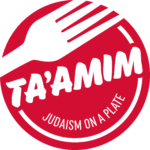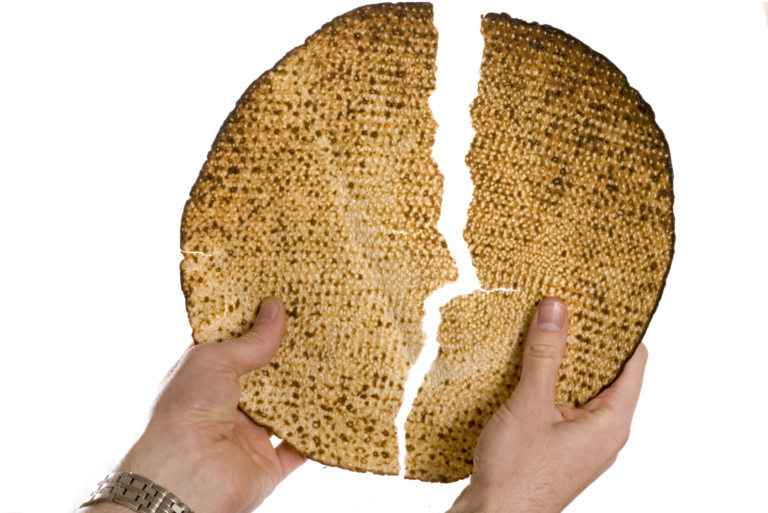Matzah. The bread of paradox. How can this very basic bread mean so much to so many? Even the Torah can’t seem to keep it straight – is it the “bread of poverty” (Lechem Oni) or is it the “bread of freedom” (Lechem Cherut). Is it our birthright or the last vestige of our slavery? Should we cry embittered tears or should we dance for joy over everything that this bread represents?
If we just take a moment to think about it, everything concerning matzah is complicated. From the days in which it is served to the preparations required from us before the matzah ever reaches the table. Even the seder itself requires a complicated story, almost a feature length introduction before we even taste the matzah! Everything about matzah is complicated: that is, aside from the ingredients. There are only two: flour and water. That’s it.
The bread of paradox has remained unchanged for thousands of years and to understand the paradox, rather than to explain it away, let us start from the very beginning, tracing the story of matzah through the ages.
What did the bread-making process look like in ancient Egypt? Bread in ancient times was invariably leavened. However, without the aid of synthetic leavening agents, yeast would have been of the wild variety, allowed to ferment over time. Consequently, ancient bread would have been much slower to rise than our modern variety. Unsurprisingly, when the Israelites were told to make a dash for it in the middle of the night, they would have had to bake dough that hadn’t fully risen! The bread would have been as flat as a pancake! And so hey presto! We invented matzah, thus giving people what to complain about on Pesach for thousands of years.
From that point forward, matzah remains pretty much the same. It is round and small and, most surprisingly for our modern sensibilities, soft. If we look to Ethiopian Jews who have made matzah uninterrupted since antiquity, they still prepare their matzah in the exact same way, daily, communally and soft. In many Sephardi households, soft matzah is still eaten over Pesach.
Some of the Pesach customs that we are familiar with make more sense if we consider that the original matzah was soft. For example, the “Hillel sandwich” – that we make towards the end of the seder, works much better as a ‘laffa style’ wrap than squished between two cracker-like matzahs. The kabbalistic custom of resting a seder plate on the matzahs works better over soft matzah that can absorb the weight of the seder plate, rather than over brittle matzahs that are sure to break.
It was only in Europe in the late 16th century that matzahs turned into the cracker-like creation we know today. In order to adhere even more stringently to the laws of avoiding chametz, the matzah makers removed as much water as possible from the dough. Thus, the matzah making also moves out of the home and the woman’s domain. The dough becomes hard to work with and unwieldy; working with such a tough dough in the prescribed 18 minutes becomes a gauntlet run.
As the matzah is such a huge part of our collective practice, it is unsurprising that anti-Semites throughout the ages ascribe a negative aspect to the most basic of our foods, often with fatal consequences. In Rabbi Joseph Cairo’s magnum opus of Jewish law Shulchan Aruch, we read that it is customary to use raisin wine on Pesach. Why is this? Raisin wine is golden, as opposed to red wine. There were so many cases of blood libels around Pesach that this law had to be put in place in a number of communities. The accusation that Jews used the blood of Christian children to make their matzah first surfaced in Norwich in 1144. Unbelievably, the last blood libel was as recent as in 2014, at a pro-Hamas rally in Seattle of all places. The injustice is unfathomable on so many levels. And yet its insidious existence as a myth is a reality that quite shockingly persists to this day.
When Issac Singer, a French Jew, introduced the first matzah rolling machine in 1838, it was instantly accepted by most Western European Jews – its benefits automatically appreciated. This was not the case in Eastern Europe. One of the leading Rabbis went as far as to say that someone eating machine-made matzah was eating chametz on Pesach! Yet the need for affordable mass-production soon outweighed this stringency. Machine-made matzah cut down on labor costs and ensured that even the poorest of Jews could have matzah on Pesach.
In 1888, a Jew called Abramson from Salant in Lithuania, trying to escape Russian conscription, took the passport of a deceased man called Dov Baer Manischewitz. When the newly minted ‘Manischewitz’ reached America and settled in Cincinnati, Ohio, he found matzahs hard to come by in his new hometown. So he and his wife Nesah started making matzahs in their basement. The demand for matzahs was so high that they soon outgrew their basement and moved to a huge factory. Why was demand so high? Sure, American Jewry needed matzah for Pesach, but the factory was producing, at its peak, 75,000 pounds of matzah daily! Truth be told, most of it was going to American pioneers heading West, as it was a food staple that would stay fresh over an extended period of time even in difficult conditions. Is it too lofty to say that matzah was the making of the American frontier? It is moving to picture those pioneers, just like the Jewish slaves, setting out into the great unknown, with faith in God to show them the way and just some unleavened bread to feed their dreams.
As the complex and varied history of matzah shows, its true paradox is that it ties us to our past, never allowing us to forget where we came from. It is, in this sense, the “bread of poverty”, echoing back to humble beginnings. And yet, at one and the same time, it presents as the “bread of freedom”. How can we reconcile this most peculiar of traditional foods, or is it simply a case study in what would have happened had Erwin Schrodinger owned a cracker rather than a pet cat?
Perhaps the answer lies in a fascinating insight offered by the famous Biblical commentator Rashi. He notes that the phrase “lechem oni” – the bread of our poverty – can alternatively be read as “the bread of our answers” (as “oni” means both “poor” and “response”). Matzah is the bread that takes centre-stage at a festive meal constructed entirely around the process of asking questions and answering them. And so, it would seem that the bridge connecting “poverty” to “freedom” depends on our ability to discover those answers. In recounting who we are and where we came from, can we answer where we are going and who we will be? Matzah is a tangible link in the chain of Judaism. It is how we hand down our legacy. A legacy that is complex and difficult yet simple and straightforward all at the same time. Like Jews and Judaism, matzah is a paradox.


